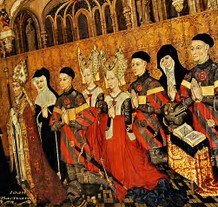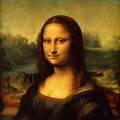The History Of Art
Art began in a cave by people that didn't want to forget. Or maybe they didn't want to be forgotten. Much of the earliest history of art has been lost to the sands of time. Even in ancient Greece while we know a lot about their academic, architectural, and ceramic achievements we know very little if but a vague knowledge of the methods of mural and easel painters. However this may prove to be a positive as much of what we do know is rampant with what is seen as bad information and incomplete thoughts. Much more modern methods, while most developed out of some of the best of these old methods, have proven to produce better quality of work.

The preservation of ancient Egyptian artifacts due to the counties dry climate and the vast collection of things that have been pulled from tombs has provided us with a wealth of knowledge on this civilizations methods they used to paint. Their techniques where refined and remarkably survived unchanged for a period of about 3000 years. While changes within their society and even in there art occurred those changes remained in fairly limited bounds from around 4700 BC up to the time of Ptolemies. There medium of choice was watercolor. They would either apply it to a mud plaster wall, or they would carve the design out of stone then use a watercolor wash to give it
color. The precise nature of which binder they used in the paint is still unknown, whether it was gum, size, or something else, maybe even a combination of all of the above. However we do know they applied the paint with crude fiber brushes. While most of the early Egyptian examples could be completely destroyed by wiping it with a damp sponge despite its remarkably preserved state much of the later examples are in a much better condition. This is because much later examples show use they
began to use pigments and brushes of a much better quality, while their processes remained the same. It wasn't until Romain influence did they begin to use lime plaster over mud.

The pre-Hellenic Greek civilizations had developed a fresco process that was almost exact to buon fresco of Renaissance Italy. According to Pliny, Vitruvius and other
writers the two principle methods for easel painting were encaustic and a mysteriously vague process thought to be oil, egg tempera or dissolved maybe emulsified wax.
No real evidence to base a solid claim on have come to light on this point, but methods, materials, and implements of encuastic painting are well known. While there sometimes seems to be great hype over Greek painters there are no known examples that have survived from the classical period. The Pompeian relics are the only real examples we have, yet most regard these as a very small piece of the much larger puzzle. Unlike the Egyptians the Greeks didn't seem to put much thought into preservation
as most of it didn't seem to survive past its immediate intended purpose. Much of our knowledge is actually derived from Romian culture that had an easier time surviving
due to the higher quality in there pottery.

It wasn't until the early Christian or Medieval era that we see vast collections of well documented art. Detailed manuscripts written by the artist describing in vivid details their processes for how to make the paint and brushes along with their methods of applying the paint. Much of the knowledge we know of early painting comes from ideas based on these manuscripts.

The Chinese and Japanese regarded preservation as an essential requirement in a work of art. Traditions that have carried over even today with the use of the same pigments
used centuries ago. However it must be kept in mind that most of the oriental artists rarely exposed there work to light unlike most of the western works. There works would be rolled up and placed in individual boxes only being taken out for brief showing. Although western influence has taken over much of this tradition
and replaced it with one more closely resembling the west. The Chinese where acquainted with many kinds of drying oils and implemented them for various reasons
much of their pictoral art was limited to ink or watercolor tints on paper. A drying oil was used for the vermilion seal that was impressed on each painting. The art has remained consistent over the years, and despite the influences from western ideas much of the materials remain the same.

The Renaissance was a time when art was being very well documented in its methods and materials. Even the technology within there schools where fairly well established;
fresco, egg tempera, and oils. The more Northern painters where somewhat less established. Much of the work done in this period began to help shape the development
of new materials and processes. Although proper interpretations and study of the old writings have come to contradict much of what we think to be true. Much like how in
Vasari's Lives of the Painters he gives credit to Jan van Eyck for the invention of oil painting, yet as early as 1781 this was disproven. The true origin of oil painting can be traced as a gradual evolution with earlier beginnings. Yet even to this day its so ingrained as truth that some still believe it. While much of what's true and what is
not is still up in the air Vasari did in the lives give a simple and straightforward account of the processes and materials used in his day. Despite the validity being taken into question most students today should look to Vasari for "the secrets" of the old masters.

Yuck, as I read it back I'm seeing a lot of grammar mistakes. Sorry bout that, will go fix them ;)
Should be fixed